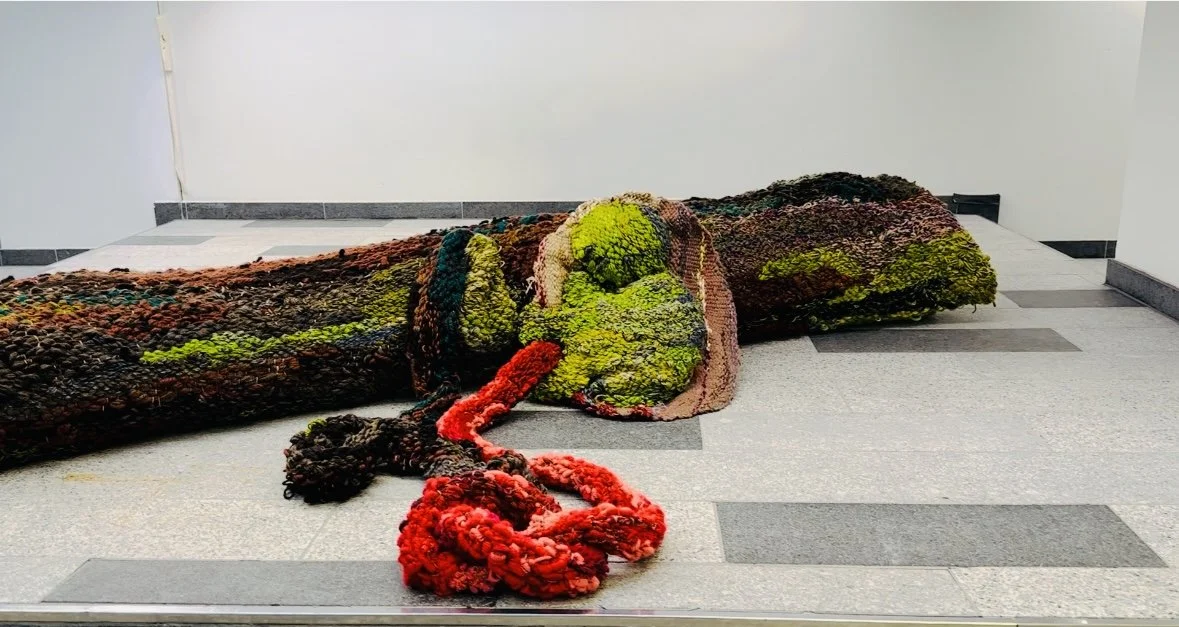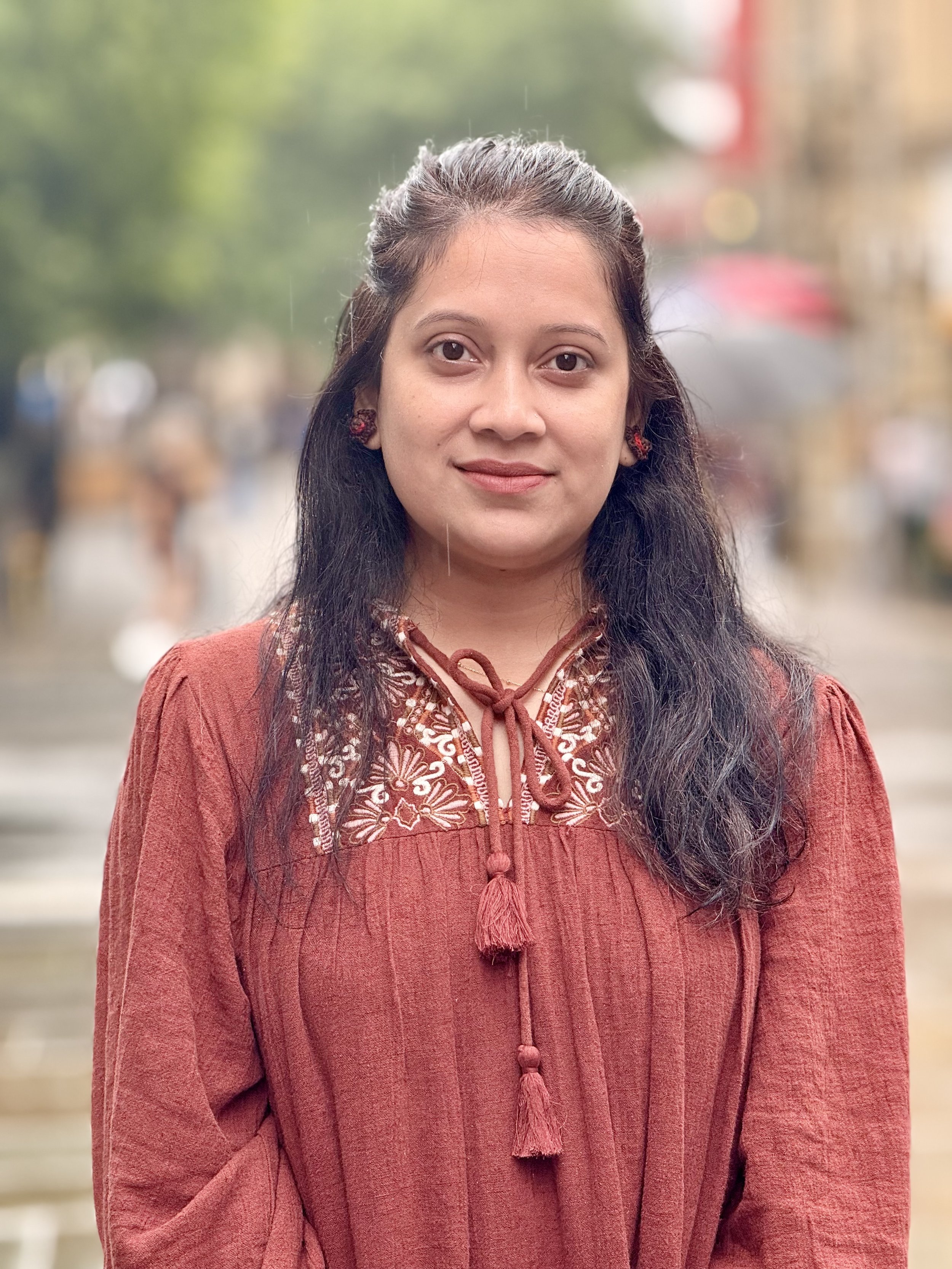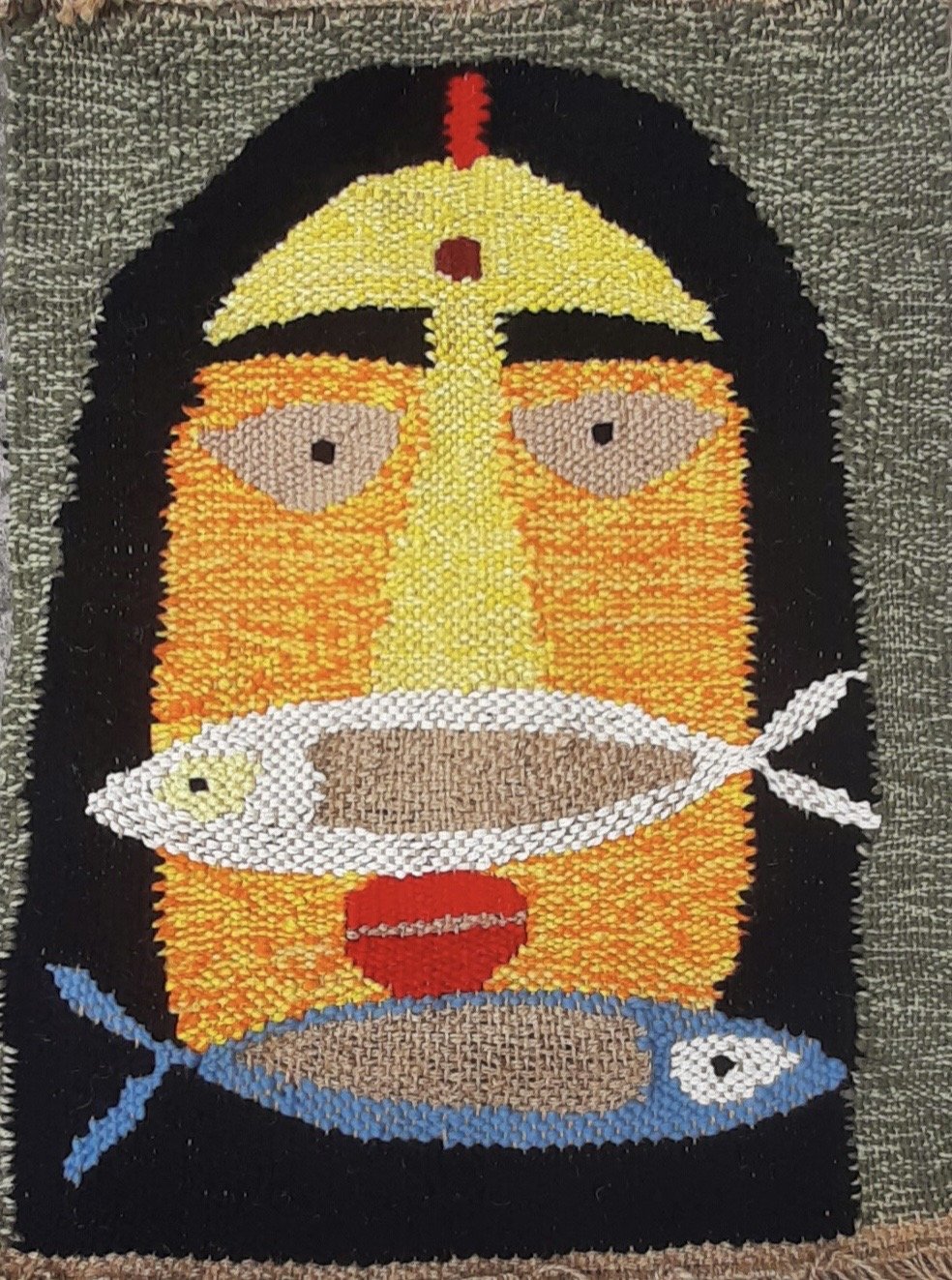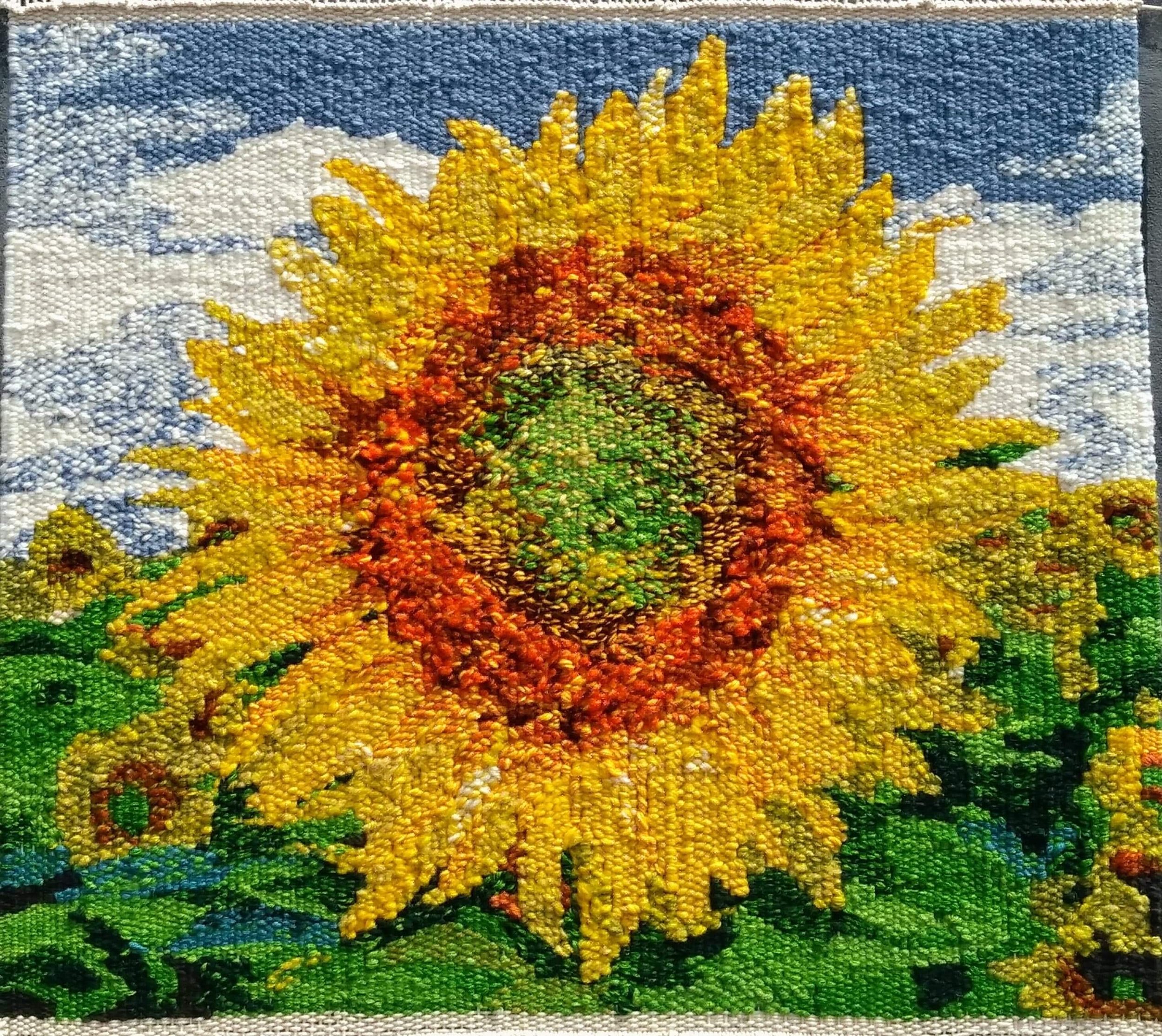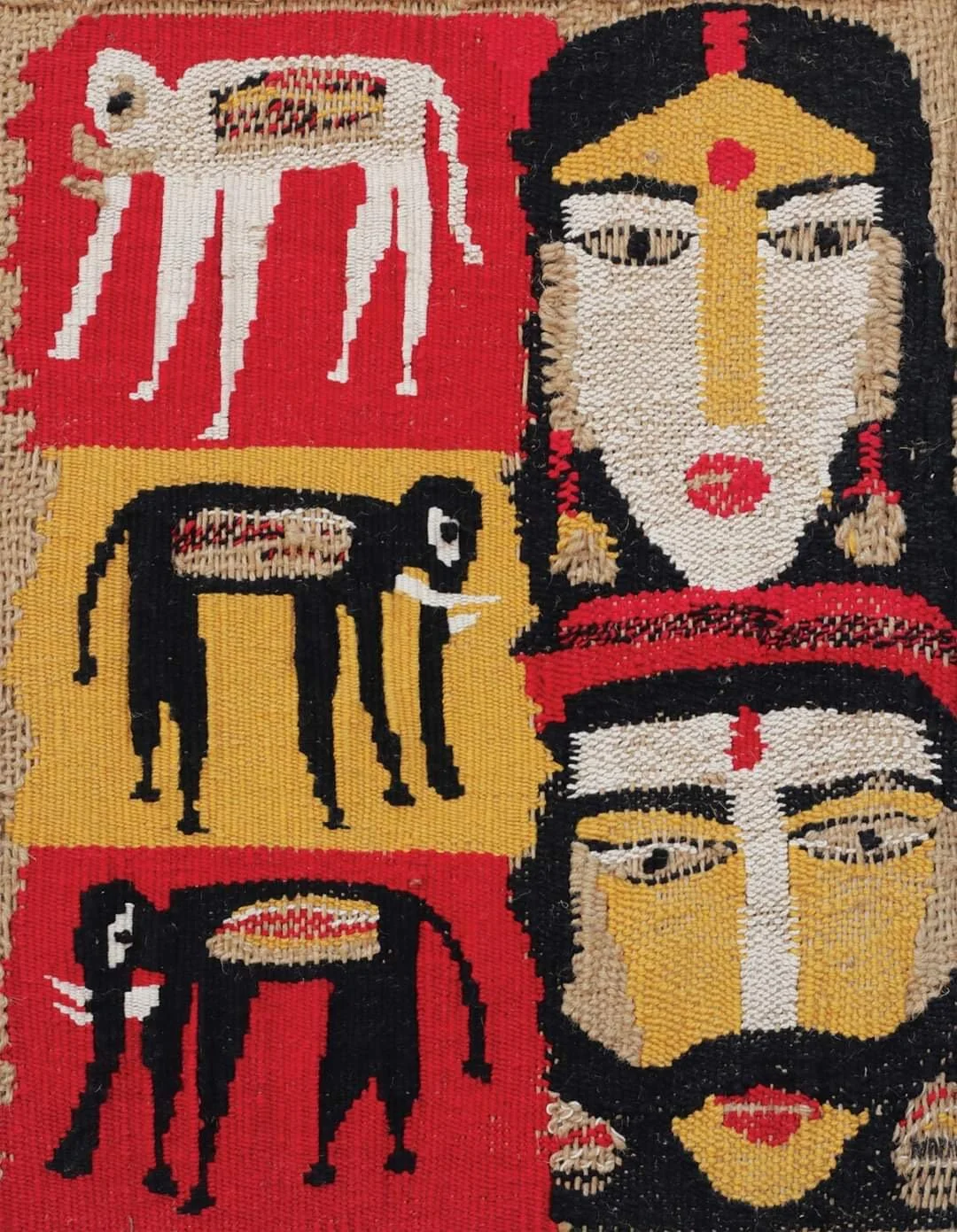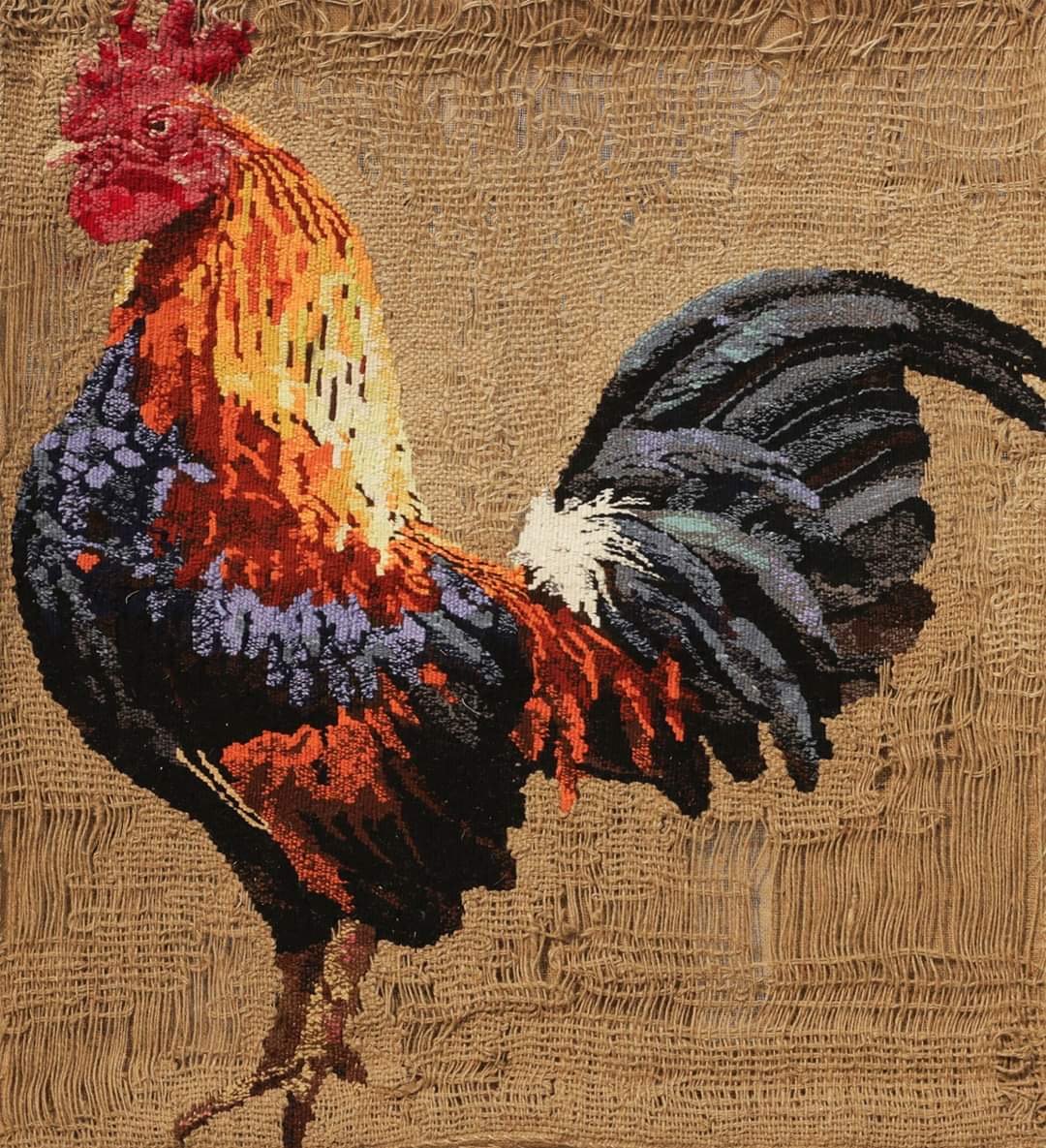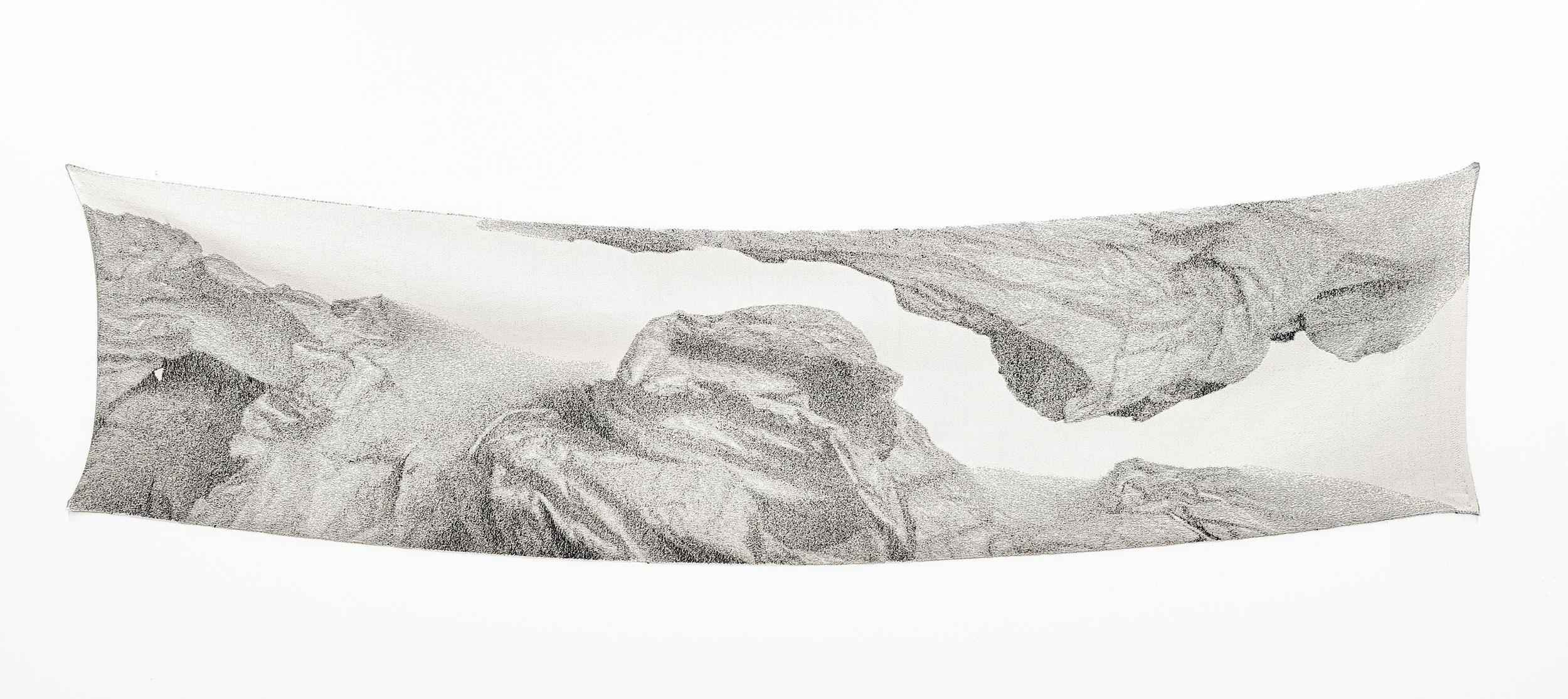10 Questions with Nabila Nabi
Nabila Nabi is a weaving artist originally from Bangladesh. She moved to the United Kingdom after earning her MA in Art and Design from the University of Salford in Manchester.
Her tapestries are part of both private and public collections across Asia, Europe, Australia, the UK, and the USA.
Growing up in Bangladesh, a South Asian country with a rich textile heritage, Nabila was introduced to the art of weaving from an early age. She was deeply influenced by her mentors during her BFA and MFA studies in Textile Arts at the University of Dhaka, who instilled in her a strong respect for craftsmanship and the narratives woven into every thread.
Her academic training, combined with her indigenous knowledge of traditional weaving, enables Nabila to create work that is both contemporary and timeless. Her deep understanding of global weaving traditions informs a practice that bridges cultural heritage and modern design.
Over the years, she has exhibited her tapestries in numerous national and international galleries, receiving acclaim for her unique ability to blend traditional techniques with modern aesthetics. Her work has been featured in several prestigious publications, and she was selected to participate in the 7th and 8th Beijing International Art Biennale in 2017 and 2019.
Nabila has conducted workshops around the world, including in Turkey, Indonesia, and Singapore, where she shares her expertise and passion for sustainable art practices. She was selected for an artist residency program in Finland and received an Artist Grant from the Prince Claus Fund in the Netherlands in 2019.
Her commitment to environmental conservation is evident in her choice of materials, using only organic fibres and natural dyes. Through her tapestries, Nabila encourages a deeper connection with nature, highlighting the intricate beauty of the natural world and the urgent need to preserve it. Her art is both visually captivating and environmentally conscious, serving as a call to action to protect our planet for future generations.
Nabila currently resides in Manchester, UK, where she continues to weave, teach, and inspire. She is an active member of the Visual Artists Association (VAA) in England.
Nabila Nabi - Portrait
ARTIST STATEMENT
Nabila Nabi’s artistic journey in weaving and traditional textile forms is a tribute to her cultural heritage. Deeply inspired by the folk traditions of her native Bangladesh, she is committed to preserving and reimagining these time-honoured crafts by weaving ancestral narratives into contemporary visual expressions.
Her work reflects a profound reverence for nature, which she sees as an interconnected web, where every element, from the smallest grain of sand to the tallest tree, plays a vital role in maintaining ecological harmony. This philosophy forms the foundation of her artistic practice. In her tapestries, she symbolically integrates the elements of earth, water, air, and fire, representing the unity and balance that exist within the natural world.
Each tapestry is a meticulously crafted interplay of colour and texture, echoing the rhythms and cycles of nature. Through these works, Nabi encourages viewers to reflect on their intrinsic relationship with the environment and the importance of preserving its delicate equilibrium. By using organic fibres and natural dyes, she not only honours traditional techniques but also emphasises sustainable practices essential to the future of the planet.
Nabi is particularly drawn to the concept of cyclical rebirth in nature, the idea that nothing truly disappears but instead transforms and returns through elemental forms. This belief shapes her artistic vision, infusing her compositions with a sense of continuity and timelessness. Her work weaves together the essence of past and present into unified narratives that speak to the enduring life force within all things.
Through her art, Nabila Nabi invites us to recognise the sacred interconnectedness of the natural world and to engage with it more consciously, with care and respect for future generations.
© Nabila Nabi
INTERVIEW
How did growing up in Bangladesh influence your early interest in weaving and textiles?
Growing up in Bangladesh greatly influenced my early interest in weaving and textiles. Surrounded by rich cultural traditions, I was exposed to the vibrant colours, patterns, and textures of handwoven fabrics from a young age. Bangladesh has a long history of textile craftsmanship, especially in muslin and jamdani weaving, which I often saw in local markets and family clothing. These everyday experiences sparked my curiosity about how fabrics were made and the stories behind each design. I was inspired by the artisans’ skills and the way textile arts were deeply connected to our heritage. This environment nurtured my appreciation for handmade work and encouraged me to explore weaving as a form of creative expression and cultural connection.
You’ve studied both in Dhaka and in Manchester. How have your academic experiences and different environments shaped your approach to art and design?
Studying in both Dhaka and Manchester has had a profound impact on my approach to art and design, helping me grow both creatively and intellectually. In Dhaka, my education was rooted in traditional techniques, local materials, and the cultural heritage of South Asia. I developed a strong foundation in handicraft, especially textile practices that reflect Bangladesh’s rich history. The environment encouraged me to explore identity, heritage, and social narratives through design, often focusing on themes like sustainability and storytelling.
In contrast, studying in Manchester exposed me to a global perspective. The curriculum emphasised innovation, interdisciplinary collaboration, and critical thinking. I was introduced to advanced technologies, contemporary design theories, and a diverse community of creatives from around the world. This broadened my understanding of how design can intersect with science, technology, and social issues. I learned to experiment more freely, combining traditional techniques with modern approaches to create work that is both meaningful and forward-thinking.
The contrast between these two educational and cultural environments helped me develop a unique design language. I’ve learned to value both tradition and innovation, and to approach art and design to connect past and present. My experiences in Dhaka gave me depth and authenticity, while Manchester challenged me to think globally and push creative boundaries. Together, they have shaped me into a designer who is thoughtful, adaptable, and committed to creating work that reflects both personal and universal narratives.
© Nabila Nabi
© Nabila Nabi
Your tapestries often blend traditional techniques with modern aesthetics. What draws you to this combination?
I am drawn to blending traditional techniques with modern aesthetics because it allows me to create work that honours the past while speaking to the present. Traditional weaving methods carry deep cultural significance and history, especially inthe context of my Bangladeshi heritage. By using these time-honoured techniques, I pay tribute to the skilled artisans and stories that shaped them. At the same time, incorporating modern aesthetics, through form, colour, or concept, makes the work relevant to contemporary audiences. This fusion allows me to explore new creative possibilities while preserving important cultural practices. It also reflects my own journey as an artist influenced by both Eastern and Western experiences. Combining the old with the new helps me express complex ideas about identity, time, and transformation, making each tapestry a bridge between tradition and innovation, memory and modernity.
Nature plays a central role in your work. Can you tell us more about how you translate natural elements like earth, water, air, and fire into woven forms?
Nature plays a vital role in my artistic practice, serving as both inspiration and guide. I am particularly drawn to the classical elements, earth, water, air, and fire, and seek to express their unique qualities through woven forms. Each element influences the materials I choose, the structures I create, and the emotions I aim to convey.
Earth is reflected in the use of natural fibres, such as cotton, jute, and wool, as well as plant-based dyes. These materials connect my work to the ground and to traditional, sustainable practices. Water inspires fluid shapes and wave-like patterns, symbolising movement, adaptability, and calm. Air is represented through lighter weaves, transparency, and open spaces, giving a sense of breath, stillness, and freedom. Fire speaks to energy and transformation, influencing bold colour choices, dynamic textures, and expressive forms.
By translating these elements into textiles, I aim to create pieces that not only reflect the physical world but also evoke a deeper emotional and sensory connection. My work encourages viewers to slow down and notice the beauty, balance, and power of nature. In doing so, I hope to foster a greater appreciation for the natural world and the ways we are all intimately connected to it.
© Nabila Nabi
You use only organic fibres and natural dyes. What inspired this commitment to sustainable materials and practices?
My commitment to using organic fibres and natural dyes stems from a deep respect for the environment and a desire to create in harmony with nature. Early in my practice, I became aware of the environmental impact of synthetic materials and chemical dyes commonly used in the textile industry. This realisation inspired me to seek out more sustainable alternatives that align with my values.
Working with organic fibres such as cotton, wool, and linen allows me to connect more closely with the natural world. These materials have unique textures and properties that bring authenticity and warmth to my work. Natural dyes, derived from plants, roots, and minerals, offer a rich and subtle colour palette that evolves beautifully over time.
By choosing sustainable practices, I aim to reduce harm to the environment while honouring traditional craft methods. It is important to me that my art not only reflects nature but also contributes to preserving it for future generations.
How do you see your work contributing to the conversation around cultural preservation and environmental awareness?
I consider my work a way to connect cultural preservation with environmental awareness. By using traditional weaving techniques and natural materials, I aim to honour the heritage of textile craftsmanship that has been passed down through generations. These methods have deep cultural meaning and reflect a lifestyle rooted in patience, skill, and a close relationship with the natural world. Through continuing these practices, I hope to keep them relevant today and help others understand their lasting value.
At the same time, my choice to use organic fibres and natural dyes is a deliberate response to current environmental concerns. By focusing on sustainable materials and slow, careful production methods, I want to highlight the impact of industrial manufacturing and fast consumer habits. My work encourages viewers to think about their own connection to nature and tradition.
In this way, I hope my art becomes part of a broader conversation—one that supports sustainability, honours cultural heritage, and promotes a more thoughtful relationship with both the environment and our shared history.
The concept of cyclical rebirth seems central to your philosophy. How does this idea influence the storytelling within your tapestries?
The concept of cyclical rebirth is deeply rooted in my philosophy and strongly influences the storytelling within my tapestries. I believe in reincarnation, the idea that the soul is immortal and continues its journey through different forms of life. When we die, our soul returns in another segment of nature, whether it be through the wind, water, earth, or another living being. This belief shapes the way I approach my work.
In my tapestries, I use patterns and motifs that reflect this continuous cycle of life, death, and rebirth. Natural elements like fish, blooming plants or flowers, or shifting animals symbolise the soul’s transformation and return. Each thread becomes part of a larger story, expressing the eternal nature of the soul and its deep connection to the rhythms of the natural world.
© Nabila Nabi
© Nabila Nabi
Your work has been exhibited globally and collected in both private and public collections. Which exhibition or milestone has been most meaningful to you so far?
Participating in the Beijing Biennale twice, in 2017 and 2019, has been the most meaningful milestone in my artistic career. These experiences provided me with the unique opportunity to present my work on a prestigious international platform, allowing me to reach a wider audience and engage with a diverse community of artists and art enthusiasts. Being part of such a significant event not only enhanced my visibility but also offered valuable insights into contemporary art trends and practices from around the world.
The exposure I gained through the Biennale greatly contributed to my personal and professional growth. It challenged me to refine my artistic vision and pushed me to explore new ideas and techniques. While my work has been exhibited globally and is included in both private and public collections, the Beijing Biennale remains a standout experience. It added immense value to my learning journey and continues to inspire my creative development.
You’ve conducted workshops in countries like Turkey, Indonesia, and Singapore. What do you enjoy most about sharing your craft with others?
Conducting workshops in countries such as Turkey, Indonesia, and Singapore has been one of the most rewarding aspects of my artistic practice. What I enjoy most about sharing my weaving with others is the opportunity to connect across cultures through a common language of creativity and tradition. Each workshop is a unique exchange where I not only teach techniques and processes but also learn from the participants’ own perspectives and cultural backgrounds.
I find great satisfaction in witnessing the excitement and curiosity of those new to weaving or natural dyeing, as they discover the beauty and depth of these traditional weavings. It is inspiring to see how individuals interpret and personalise the skills, creating their own stories through the materials. This collaborative environment fosters a sense of community and shared purpose, emphasising the importance of preserving artisanal knowledge in a rapidly changing world.
Additionally, teaching allows me to reflect on my own practice and deepen my understanding of the craft. The diversity of participants enriches my approach and encourages innovation within tradition. Ultimately, sharing my work is about more than just technique, it is about passing on values of sustainability, patience, and respect for nature and culture. These workshops empower others to carry forward these important traditions while adapting them to their own lives.
© Nabila Nabi
Lastly, looking ahead, what projects or ideas are you most excited to explore in the near future?
Looking ahead, I am excited to explore new projects that deepen my connection with communities and expand my artistic practice. Recently, I had the meaningful opportunity to work with residents of a local care home, where I shared a childhood tradition from my country, writing letters to loved ones and stitching them onto handkerchiefs. This personal memory sparked a wonderful creative exchange. The participants recalled their own childhood experiences and expressed them through artwork using various materials I provided, such as paper, threads, fabric, colour, and clay. The project was very successful, bringing joy and a sense of connection to everyone involved.
Building on this experience, I am eager to develop more community-based projects that encourage storytelling and creativity through mixed media. I believe art can be a powerful tool for healing and sharing memories across generations.
Additionally, I am honoured to have been selected for a six-week artist residency program starting September 19, 2025, as part of the NY20+ Upcycle Art Festival in China, which will conclude on October 31, 2025. This residency offers an exciting opportunity to experiment with sustainable materials and explore new themes related to upcycling and environmental awareness. I look forward to combining these experiences to continue growing as an artist and connecting with diverse audiences.
Artist’s Talk
Al-Tiba9 Interviews is a promotional platform for artists to articulate their vision and engage them with our diverse readership through a published art dialogue. The artists are interviewed by Mohamed Benhadj, the founder & curator of Al-Tiba9, to highlight their artistic careers and introduce them to the international contemporary art scene across our vast network of museums, galleries, art professionals, art dealers, collectors, and art lovers across the globe.

